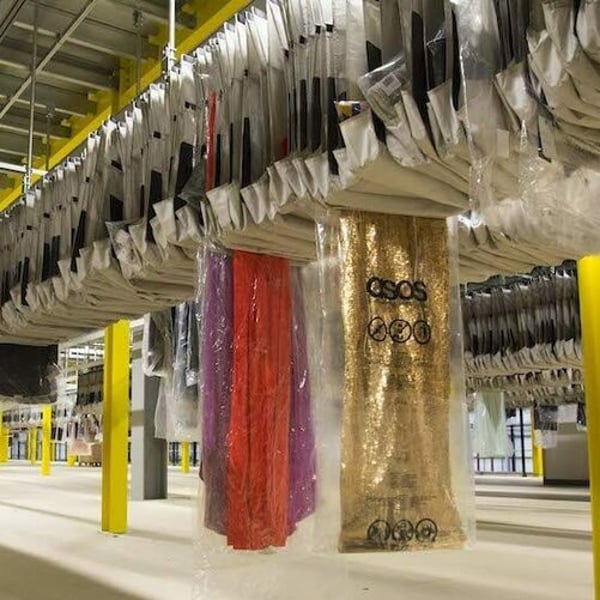Published
September 30, 2025
ASOS delivered a full-year trading update on Tuesday and while it didn’t give much away in terms of what’s happening on the monetary front (but sales have been lower than expected and adjusted EBITDA is at the lower end of its forecast) it did show that progress is being made at the online fashion retail giant.

So for FY25, its gross profit margin rose around 350bps, “driven by the successful commercial model implementation, focusing on higher full-price sales mix and lower markdown activity”.
Its Test & React model reached more than 20% of own-brand sales, and flexible fulfilment reached 10% of third-party GMV, “enabling it to bring customers the best, most relevant product faster and more efficiently”.
Efficiencies were delivered via “meaningful improvements particularly across its supply chain, through a series of wide-ranging initiatives including reducing the causes of unnecessary returns, renegotiation of key distribution contracts and optimising its warehouse footprint, leading to significant multi-year savings in FY26 and beyond”.
Distribution and warehousing cost-to-serve is down around 3ppts over the last two years, with further opportunities identified.
For the year, its adjusted EBITDA is up over 60%, but is still expected to be towards the lower end of the £130 million to £150 million guided range, “driven by higher gross margin and continued cost efficiency, resulting in an adjusted EBITDA margin of more than 5%, in line with consensus”.
During H2, it said it “delivered meaningful cost actions which, while not delivering a material benefit during the period, have permanently lowered [its] exit cost base, positioning the company to realise significant annualised savings in FY26”.
The profitability improvements were delivered despite lower sales as it saw lower-than-expected GMV, with group revenue “slightly below consensus estimates, as the company continues to focus on higher quality sales against a soft consumer backdrop”.
But profit per order rose by around 30%, “underscoring the fundamental reset in unit economics achieved through focusing on creating sustainably profitable relationships with customers”.
Revamp programme
This all came as the company said that in FY25, it “made significant strategic progress, focused on building sustainably profitable and resilient foundations”.
But before we get to the details of that, it’s worth pointing out the changes it has gone through over the past few years.
Its revamp programme has three phases: phase one has seen successfully clearing its excess stock, reducing its warehouse footprint and strengthening the balance sheet. For phase two it’s reshaped the business towards a “stronger, more profitable underlying economic model that ASOS can grow in a sustainable fashion”.
And phase three is the “re-engaging customers” element of its revamp. “With stronger foundations in place, the final phase is regaining the hearts and minds of customers at scale, starting with its core customers in its core markets,” it said.
As it entered FY25, ASOS had essentially completed phase one, having significantly reduced and comprehensively refinanced its net debt at the beginning of the year, announcing further efficiencies to its global distribution network with the mothballing of its Atlanta fulfilment centre, and reducing its inventory position by more than 60% since the end of FY22 (from £1.1 billion to around £400 million).
Having concurrently scaled its new commercial model and rebuilt its variable and fixed cost base — stage two of this process — it had planned to shift gears to the final stage earlier in FY25.
But it said that “more opportunity to reduce fixed costs and drive further variable cost optimisation were explored and the business focus remained on securing even stronger profitability foundations that will deliver further material improvements to ASOS’ cost base in FY26 and beyond”.
Over the summer it pivoted to the final phase of its transformation, launching the start of a series of new customer experiences – including its exclusive Adidas x ASOS collaboration, the ASOS.WORLD loyalty programme in the UK, and expanding Topshop and Topman through new channels “with positive early signs on customer engagement”.
In FY26, it added that “building customer love is the primary focus for [its] energy, investment and resources. [It] enters this exciting phase of its transformation with a business model, stock profile and underlying cost base that positions it to succeed, with more new customer experiences to come”.
It all adds up to being “confident” that for the current year it will achieve adjusted EBITDA and free cash flow in line with consensus forecasts, supported by further gross margin improvement towards around 50% and continued cost efficiency.
It reiterated its medium-term guidance for sustainable adjusted EBITDA growth to a margin of around 8%, sustainably ahead of capex, interest, tax and leases as well as expecting a return to revenue growth and improving gross margin towards around 50%.
Copyright © 2025 FashionNetwork.com All rights reserved.







